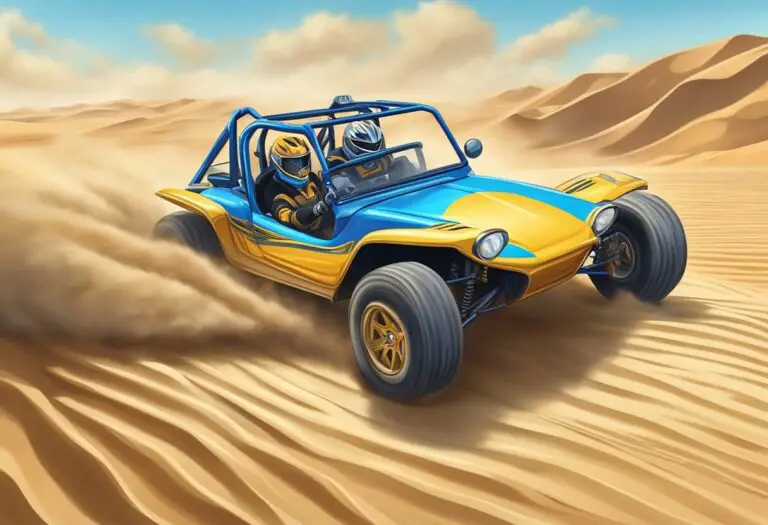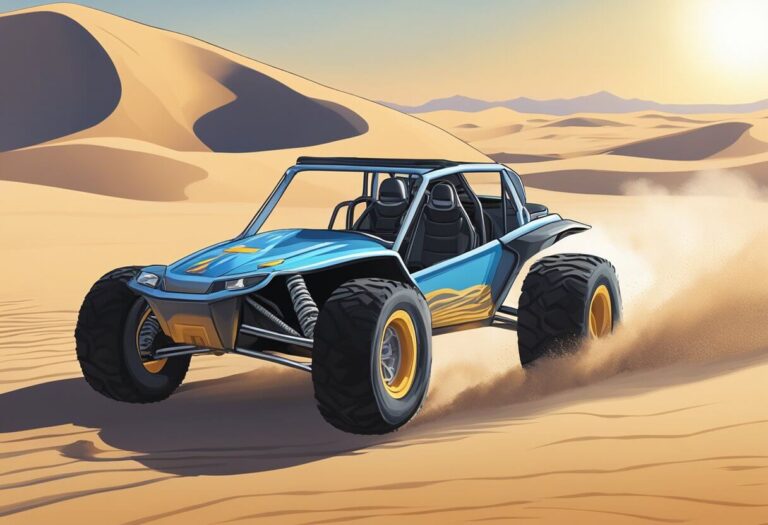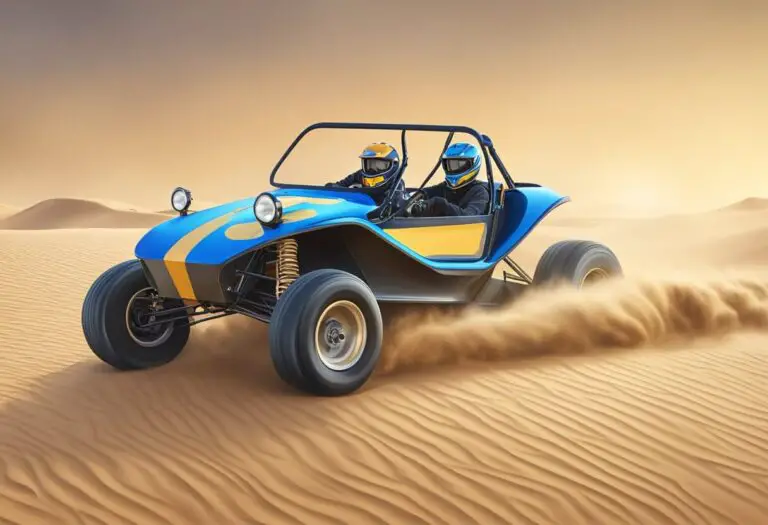Sand Rail Dune Buggy: How to Make It Street Legal
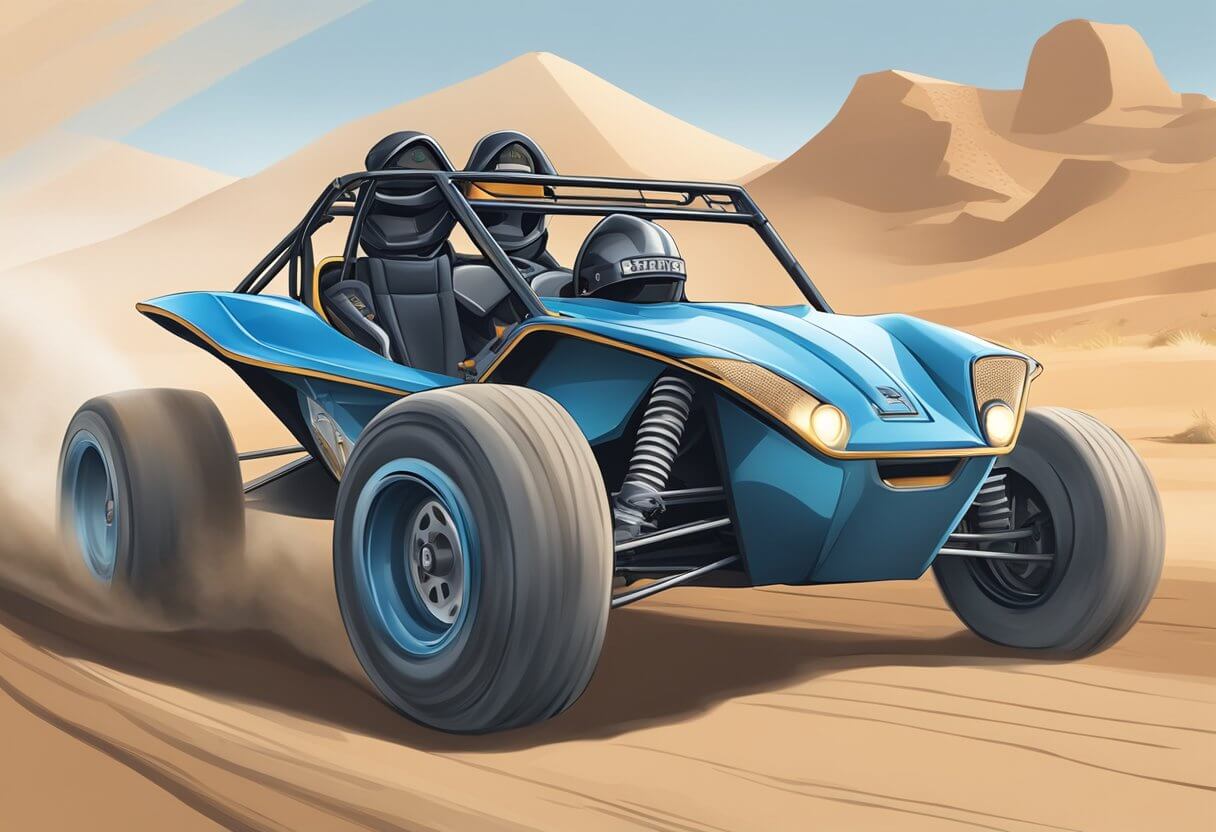
Sand rail dune buggies are a popular off-road vehicle for racing and riding in sand dunes. However, there is much confusion surrounding whether these vehicles are street legal or not. In this article, we will explore the topic of sand rail dune buggy street legality.
To begin with, it is important to note that sand rails are not typically street legal vehicles. This is because they are lightweight recreational off-road vehicles without bodywork, which makes them unsafe for street use. However, with significant modifications, sand rails can potentially be made street legal and meet safety and registration requirements.
If you are interested in making your sand rail dune buggy street legal, there are several legal requirements that you must meet. These include safety requirements such as having a working engine, brakes, seats, and frame, as well as registration and insurance requirements. Additionally, you will need to make modifications to your vehicle to meet street legal standards, such as adding turn signals, brake lights, and mirrors.
Overview of Street-Legal Sand Rails
Definition and Purpose
Sand rails are off-road vehicles designed to handle sand dunes and other rough terrain. They typically feature a lightweight frame, high ground clearance, and large, knobby tires. Sand rails are often used for recreational purposes, such as racing and exploring remote areas.
Street-legal sand rails, on the other hand, are modified versions of these vehicles that can also be driven on public roads. To be considered street legal, sand rails must meet certain safety and registration requirements, such as having turn signals, headlights, and brake lights.
History and Evolution
Sand rails have been around since the late 1960s and have evolved significantly over the years. Initially, sand rails were built using Volkswagen Beetle chassis and engines, but today’s sand rails are often custom-built with high-performance engines and suspension systems.
Since sand rails were originally designed for off-road use, making them street legal requires significant modifications. In many cases, sand rails must be completely rebuilt to meet safety and registration requirements. However, with the right modifications and documentation, it is possible to make a sand rail street legal in many states.
Legal Requirements for Street Legality

To make a sand rail dune buggy street legal, there are several legal requirements that need to be met. These requirements vary by state and jurisdiction, so it is important to check with the local Department of Motor Vehicles (DMV) or equivalent agency for specific regulations.
Vehicle Registration
The first step towards making a sand rail dune buggy street legal is to register the vehicle with the DMV. This involves providing proof of ownership, completing registration forms, and paying any fees or taxes required by the state. In some cases, the DMV may also require a safety inspection or emissions test to ensure that the vehicle meets certain standards.
Safety Equipment
To ensure the safety of the driver and passengers, sand rail dune buggies must be equipped with certain safety features. This includes a roll cage or roll bar to protect against rollovers, seat belts or harnesses to keep occupants secure, and headlights, taillights, and turn signals for visibility on the road. Other safety equipment may include a fire extinguisher, first aid kit, and warning triangle.
Emissions Standards
Sand rail dune buggies must also meet certain emissions standards to be street legal. This may involve installing a catalytic converter or other emissions control device to reduce the amount of pollutants released into the air. In some states, emissions testing may be required on a regular basis to ensure that the vehicle remains in compliance with these standards.
By meeting these legal requirements, sand rail dune buggies can be made street legal and driven on public roads. However, it is important to note that some states may have additional regulations or restrictions on the use of these vehicles, such as limits on where they can be driven or speed limits.
Modifications for Street Legality
When it comes to making a sand rail dune buggy street legal, there are certain modifications that must be made to ensure compliance with the law. Here are some of the most important modifications to consider:
Lighting and Signaling
One of the most important modifications for street legality is ensuring that the sand rail has proper lighting and signaling. This includes headlights, taillights, turn signals, and brake lights. LED lights are a popular choice for their brightness and energy efficiency. In addition, reflectors and warning devices are also required for safety purposes.
Brakes and Suspension
Another key modification for street legality is ensuring that the sand rail has proper brakes and suspension. The sand rail must have a functioning parking brake, as well as a hydraulic brake system that meets state and federal safety standards. The suspension must also be in good condition to ensure a smooth and safe ride.
Tires and Wheels
The sand rail’s tires and wheels must also be in compliance with state and federal safety standards. The tires must be in good condition with adequate tread depth, and the wheels must be properly aligned and balanced. In addition, the sand rail’s wheels must be equipped with proper safety features, such as lug nuts and hubcaps.
Inspection and Certification Process
State-By-State Variations
The process of getting a sand rail dune buggy street legal varies from state to state. Some states require a thorough inspection of the vehicle by a licensed mechanic, while others may only require a simple visual inspection. It is important to check with the local DMV to determine the specific requirements for your state.
In general, the inspection process will involve checking the safety features of the vehicle, such as brakes, lights, and seat belts. The vehicle must also meet emissions standards, which may require installing a catalytic converter or other emissions control devices.
Documentation and Proof of Compliance
Once the sand rail dune buggy has passed the inspection, the owner will need to provide documentation and proof of compliance to the DMV. This may include a certificate of inspection, proof of insurance, and a title or registration.
Keep documentation up-to-date and available for inspections or traffic stops. Failure to provide proof of compliance can result in fines or vehicle impounding.
Getting a sand rail dune buggy street legal is complex, time-consuming. Follow state requirements, keep documentation updated to legally enjoy off-roading within legal bounds.
Insurance and Liability
Insurance Coverage Types
When it comes to insuring a street-legal sand rail dune buggy, there are a few options available to the owner. One option is to obtain liability insurance, which covers damages or injuries caused to others in the event of an accident. Another option is to obtain comprehensive coverage, which covers damages to the sand rail dune buggy itself, as well as theft and other non-collision incidents.
Insurance coverage for sand rail dune buggies varies by state registration. Some states require minimum coverage amounts, others none. Consult an insurance agent to determine appropriate coverage for your situation.
Liability Considerations
In addition to insurance coverage, sand rail dune buggy owners should also consider liability when operating their vehicles on public roads. Liability refers to the legal responsibility for damages or injuries caused to others in the event of an accident.
Sand rail dune buggies are typically classified as low-speed vehicles (LSVs) and are subject to certain regulations when operated on public roads. These regulations may include requirements for safety features such as seat belts, headlights, and turn signals. Failure to comply with these regulations can result in fines and other legal consequences.
In addition to complying with regulations, sand rail dune buggy owners should also practice safe driving habits and exercise caution when operating their vehicles on public roads. This includes obeying traffic laws, maintaining a safe speed, and avoiding reckless behavior that could lead to accidents or injuries. By taking these steps, sand rail dune buggy owners can help minimize their liability and protect themselves and others on the road.
Maintenance and Upkeep
Regular Maintenance
To keep a sand rail dune buggy street legal, regular maintenance is crucial. One should frequently check the vehicle’s brakes, suspension, and steering components. The owner’s manual usually provides a maintenance schedule, which should be followed. In addition, one should regularly change the oil, oil filter, and air filter.
To prevent rust and corrosion, it is recommended to wash the sand rail dune buggy regularly. One should also check the tires for wear and tear, and replace them if necessary. It is important to keep the sand rail dune buggy in good condition to avoid any accidents on the road.
Troubleshooting Common Issues
Sand rail dune buggies can face various issues, which can be easily resolved with proper troubleshooting. If the sand rail dune buggy is not starting, one should check the battery, starter, and ignition system. If the sand rail dune buggy is not running smoothly, one should check the fuel system and carburetor.
If the sand rail dune buggy is making unusual noises, one should check the exhaust system, transmission, and drivetrain. If the sand rail dune buggy is not stopping properly, one should check the brake system and brake pads. Regular maintenance and troubleshooting can help keep the sand rail dune buggy in good condition and ensure it stays street legal.
Driving Tips and Etiquette
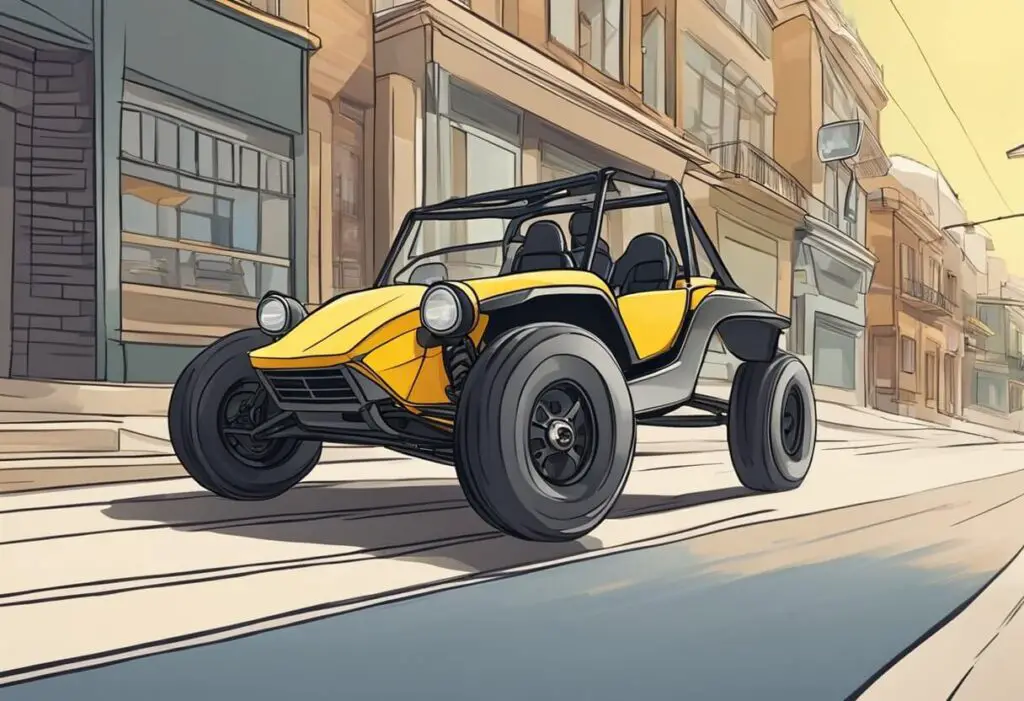
On-Road Driving Techniques
When driving a sand rail dune buggy on the road, it is important to remember that it is not a typical car. Sand rail dune buggies have a higher center of gravity and a shorter wheelbase, which can make them more difficult to handle. Therefore, drivers should take extra precautions and use specific driving techniques to ensure a safe and enjoyable ride.
One of the most important things to keep in mind is to take turns slowly and smoothly. Sand rail dune buggies tend to be top-heavy, which means that they can easily tip over if a turn is taken too quickly. Drivers should also avoid sudden movements, such as swerving or braking abruptly, as this can cause the buggy to lose control.
Another technique that can be helpful when driving a sand rail dune buggy on the road is to use the handbrake. Unlike regular cars, sand rail dune buggies do not have a parking brake, so the handbrake can be used to keep the buggy from rolling when parked.
Respecting Traffic Laws
Sand rail dune buggies are considered motor vehicles and are subject to the same traffic laws as any other car on the road. Drivers should always obey speed limits, stop signs, and traffic signals. Additionally, it is important to wear a seatbelt and make sure that all passengers do the same.
One thing to keep in mind is that sand rail dune buggies may not be legal on all roads. Some states have restrictions on where off-road vehicles can be driven, so drivers should check local laws and regulations before taking their buggy on the road. It is also important to make sure that the buggy is properly registered and insured.
Community and Resources
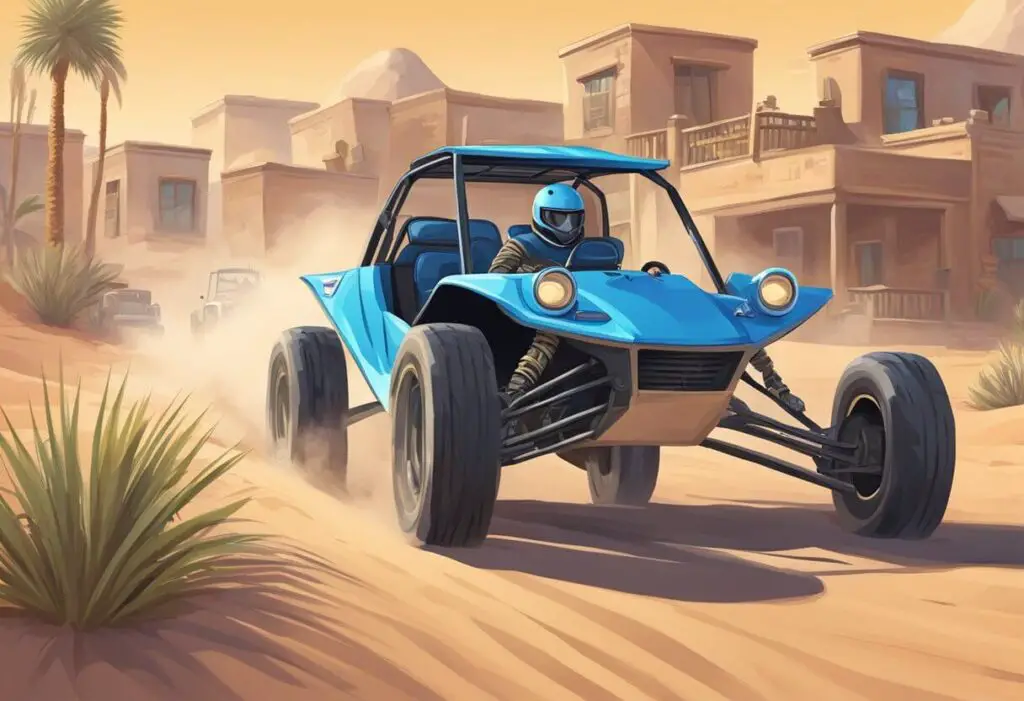
Sand rail dune buggies are a popular off-road vehicle and there are many clubs, associations, and online forums dedicated to them. These communities offer a wealth of knowledge and resources to help sand rail enthusiasts build, maintain, and enjoy their vehicles.
Clubs and Associations
Joining a sand rail club or association is a great way to connect with other enthusiasts and learn from their experiences. These organizations often host events such as races, rallies, and off-road adventures. Some popular sand rail clubs and associations include:
- American Sand Association
- Sand Addiction Magazine
- Southern California Sand Drag Association
- Western Sand Drag Association
Online Forums and Marketplaces
There are many online forums and marketplaces dedicated to sand rail dune buggies. These platforms allow enthusiasts to connect with each other, share information, and buy and sell parts and vehicles. Some popular online forums and marketplaces include:
- Dune Buggy Archives
- Sand Rails for Sale
- The Samba
- VW Vortex
These online communities can be a great resource, but exercise caution when buying and selling. Research sellers, ask for detailed information and photos before purchasing.

